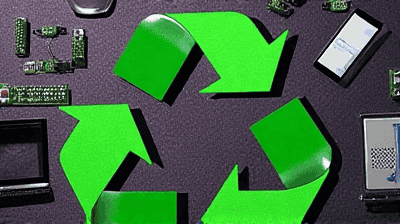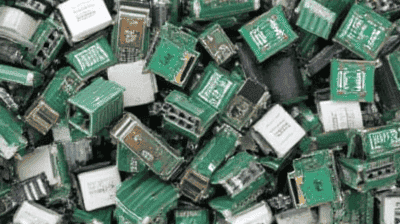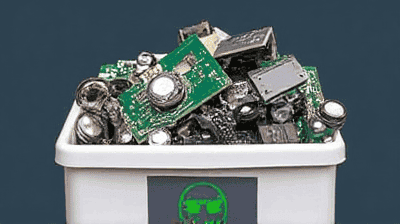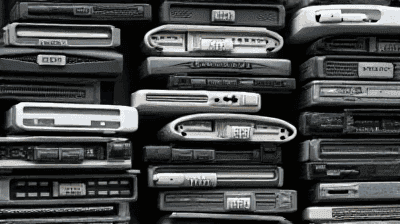
In our technology-driven society, the proliferation of electronic devices has become an integral part of daily life. However, with the increasing consumption of gadgets like smartphones, laptops, tablets, and televisions comes a significant environmental challenge: electronic waste, or e-waste. As old devices are discarded, they can contribute to serious environmental issues if not managed properly. Responsible recycling through certified e-waste programs is crucial for mitigating these impacts and recovering valuable materials.
Electronic waste refers to discarded electrical or electronic devices. The scope of e-waste includes a diverse range of items, including but not limited to:
The U.S. Environmental Protection Agency (EPA) estimates that millions of tons of e-waste are generated annually in the United States alone, presenting both a challenge and an opportunity for effective waste management.
E-waste contains a complex amalgamation of materials, including metals, plastics, and glass. Some common components include:
The presence of both valuable and hazardous materials underlines the importance of proper recycling methods.

The lack of proper e-waste recycling can lead to severe environmental consequences:
The improper handling of e-waste can also pose significant health risks. Individuals working in unregulated recycling operations may be exposed to hazardous materials, leading to:
Despite the challenges posed by e-waste, responsible recycling can generate economic benefits:
Certified e-waste recycling programs adhere to specific standards and regulations to ensure safe and effective recycling practices. Certification provides consumers with the assurance that their e-waste is being handled responsibly. Common certifications include:
R2 Certification: The Responsible Recycling (R2) certification is a recognized standard for e-waste recycling that emphasizes environmental and social responsibility. R2-certified facilities adhere to strict standards for the safe handling of e-waste, including proper management of hazardous materials.
e-Stewards Certification: The e-Stewards certification focuses on socially and environmentally responsible recycling. Facilities with this certification are committed to ethical recycling practices, including no exporting of hazardous waste to developing countries.
ISO 14001: This international standard specifies requirements for an effective environmental management system (EMS). Facilities that comply with ISO 14001 demonstrate their commitment to minimizing their environmental impact through responsible recycling practices.
Certified e-waste recycling programs are characterized by:

The process of recycling e-waste through a certified program typically involves several steps:
Collection: E-waste is collected through various methods, including drop-off locations, community collection events, and partnerships with retailers offering take-back programs.
Sorting and Data Destruction: Devices are sorted based on their type and material composition. Secure data destruction processes are employed to ensure any sensitive information is irretrievably erased.
Disassembly: E-waste is dismantled into its component parts. Valuable materials such as metals and plastics are separated for recycling. Hazardous components are categorized for safe disposal.
Recycling: Recyclable materials are processed through specialized techniques to recover metals, plastics, and glass, which can then be repurposed for new products.
Responsible Disposal: Residual hazardous materials, which cannot be reused or recycled, are disposed of in compliance with local and international regulations, ensuring environmental safety.
Participating in certified e-waste recycling programs provides numerous benefits to both consumers and the environment:
Environmental Protection: Certified programs prioritize safe disposal methods, reducing soil and water contamination risks associated with improper e-waste disposal.
Data Security: Consumers can trust that their personal information is handled securely and erased completely during the recycling process, helping to prevent data breaches.
Resource Conservation: By recovering valuable materials from old devices, certified programs help conserve natural resources and reduce the environmental impact associated with manufacturing new electronics.
Community Support: Many certified programs contribute to local economies by providing jobs and creating awareness about responsible e-waste disposal practices.
Finding a certified e-waste recycling program in your area can be accomplished through a few simple steps:
Check Certification Websites: Visit the websites of certification organizations, such as R2 or e-Stewards, to locate certified recyclers near you. These organizations often provide lists of accredited facilities.
Local Government Resources: Municipal waste management departments typically have information about local e-waste collection programs and certified recyclers.
Retail Take-Back Programs: Many electronics retailers have established recycling initiatives. Inquire about any take-back programs they may offer for old devices, ensuring they partner with certified recyclers.
Community Events: Participate in community e-waste collection events, which are frequently organized by local governments, nonprofits, or environmental organizations.
Search Online: Many websites and platforms compile lists of certified e-waste recyclers. Researching online can uncover additional options available in your area.
When selecting a recycling program, consider asking the following questions to ensure their credibility:
Are you certified?: Verify that the recycler holds proper certifications, such as R2 or e-Stewards, indicating adherence to responsible recycling practices.
What happens to the e-waste?: Ask about the recycling process used and how materials are managed at the facility, especially concerning data destruction and hazardous materials.
Do you provide documentation?: Inquire if the recycler offers certificates of recycling or tracking documentation to confirm that your e-waste has been disposed of responsibly.
What data security measures do you implement?: Ensure that the recycler has robust data security protocols in place to protect your information.
Are there any fees for recycling?: Inquire whether there are any costs associated with recycling your electronic devices, although many programs offer free recycling services.

As consumers, we play a critical role in the e-waste recycling ecosystem. By making informed choices and adopting responsible behaviors, we can contribute to sustainable waste management practices:
Educate Yourself: Stay informed about e-waste issues and the potential environmental impacts. Understanding the consequences of improper disposal can motivate you to recycle responsibly.
Choose Responsible Brands: When purchasing electronics, consider brands that prioritize sustainability and have established take-back and recycling programs.
Repair and Reuse: Extend the life of your electronic devices by repairing them instead of immediately opting for new purchases. Many local shops offer repair services, which can reduce e-waste generation.
Sort and Store: Properly sort and store e-waste until you can take it to a certified recycler. Avoid placing broken or outdated devices in regular trash where they can contribute to landfill pollution.
Spread Awareness: Advocate for responsible e-waste recycling within your community. Share information about certified recycling programs and encourage friends and family to recycle their electronics responsibly.
By actively participating in responsible e-waste recycling, individuals can contribute to a more sustainable future. The long-term benefits include:
Innovations in recycling technology continue to emerge, enhancing the efficacy of e-waste recycling processes:
Hydrometallurgical Processes: This method employs aqueous solutions to extract metals from electronic devices, minimizing environmental impact and recovering precious materials.
Artificial Intelligence: AI can streamline the sorting process in recycling facilities, optimizing efficiency and ensuring that valuable materials are separated from waste.
In response to increasing regulations and consumer demand for sustainability, many manufacturers have initiated take-back programs. These initiatives:
Encourage Returns: Provide incentives for consumers to return old devices by offering discounts or credits on future purchases.
Streamline Recycling: Manufacturers can ensure that their products are recycled responsibly, mitigating potential environmental impacts.
Educational initiatives aimed at informing consumers about the importance of e-waste recycling are gaining traction:
School Programs: Integrating e-waste education into school curricula can help foster a sense of environmental responsibility among the next generation.
Community Workshops: Hosting workshops to educate residents about e-waste recycling processes and best practices can strengthen community engagement and awareness.
The global e-waste crisis presents significant challenges that require immediate attention and action from individuals, communities, and industries alike. By understanding what e-waste is, recognizing the importance of responsible recycling, and utilizing certified e-waste programs, we can collectively mitigate the environmental and health risks associated with electronic waste.
Engaging in responsible recycling practices not only contributes to a cleaner environment but also supports the recovery of valuable materials. As consumers, we hold the power to shape the e-waste landscape by making informed choices and advocating for sustainable practices.
As the world continues to advance technologically, let us remain vigilant in our commitment to responsible electronic waste management, ensuring that our gadgets do not negatively impact future generations or the planet.